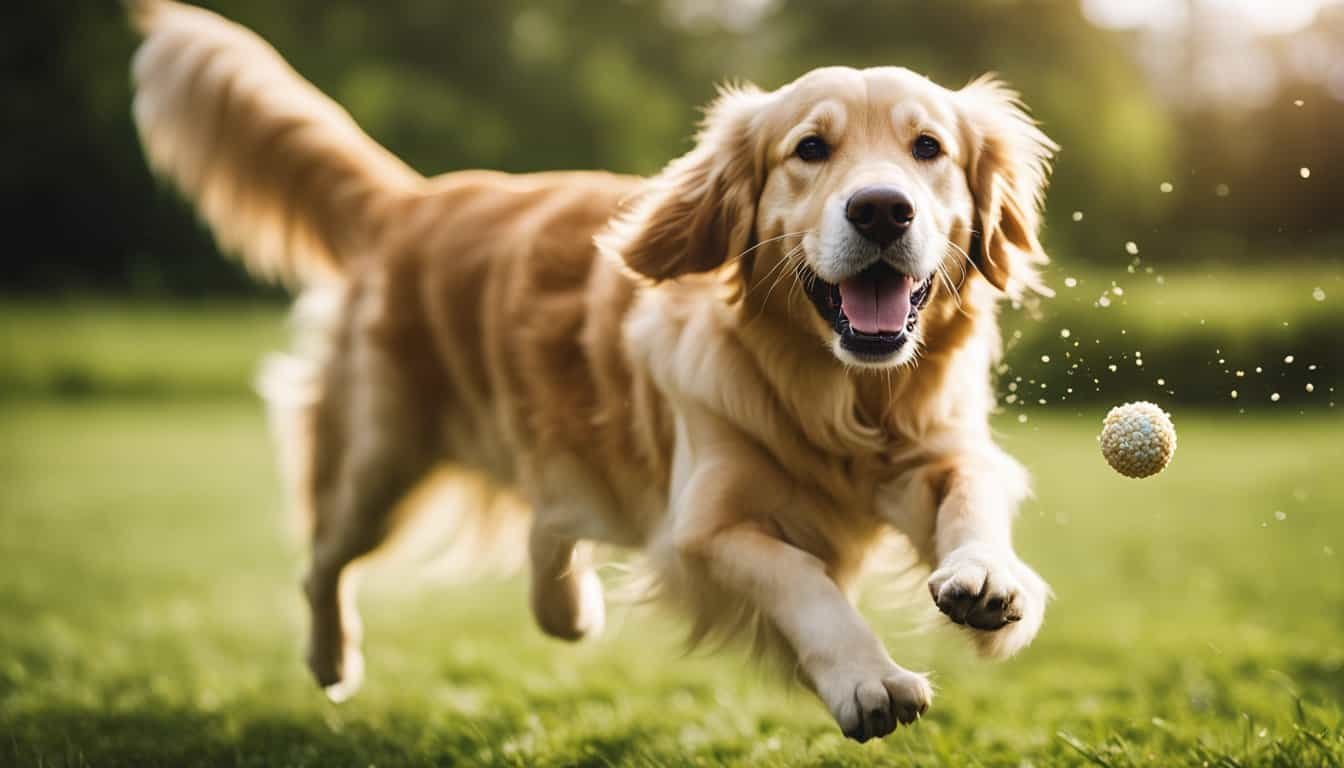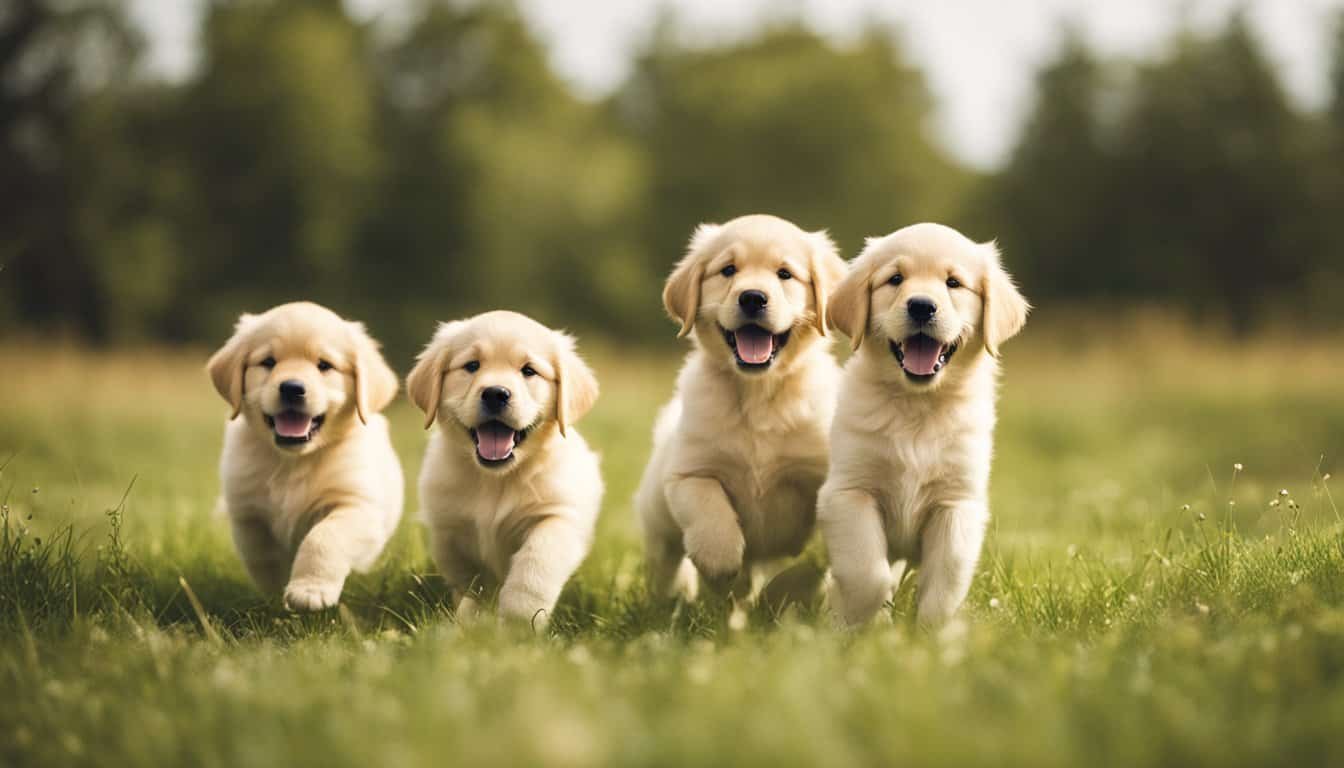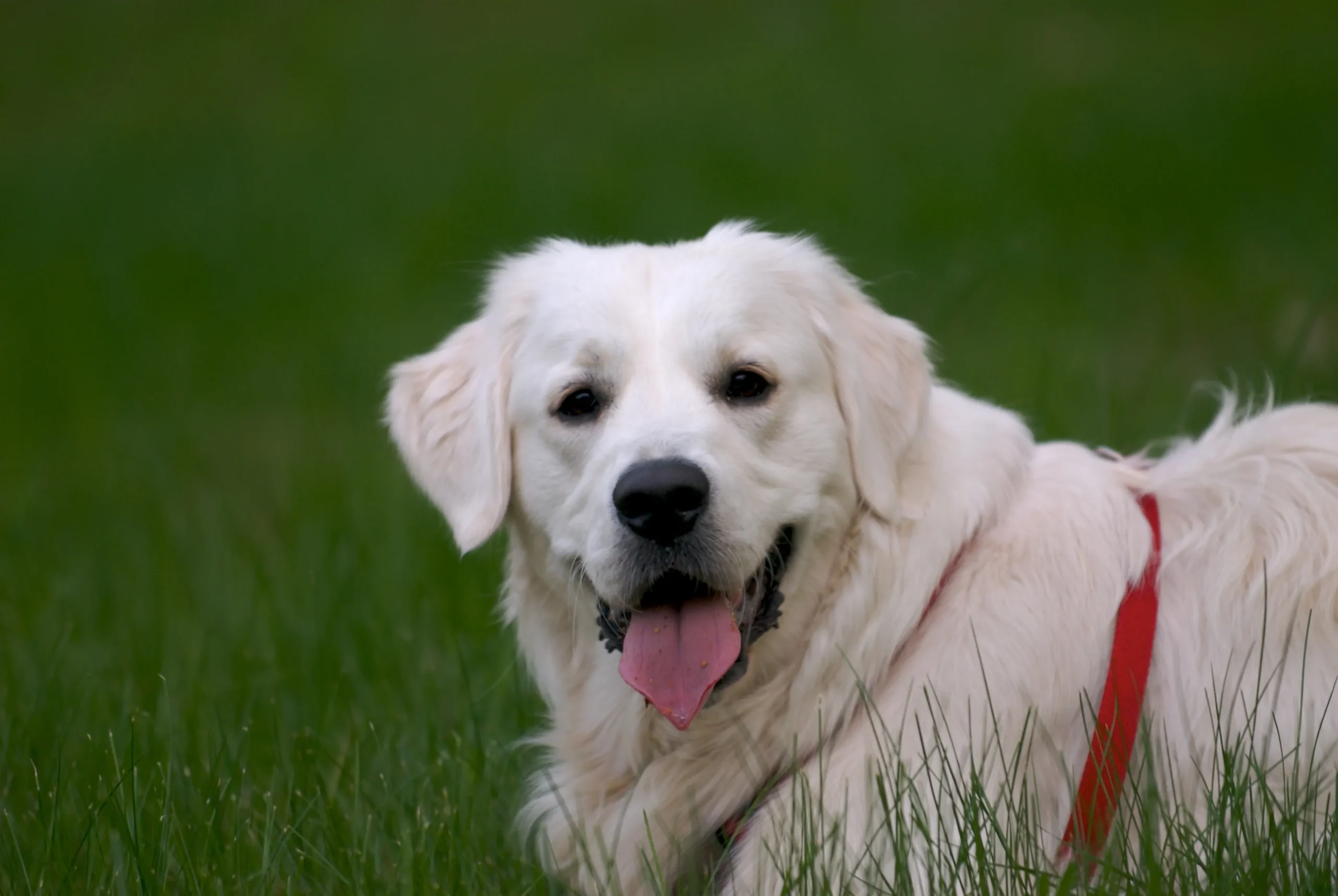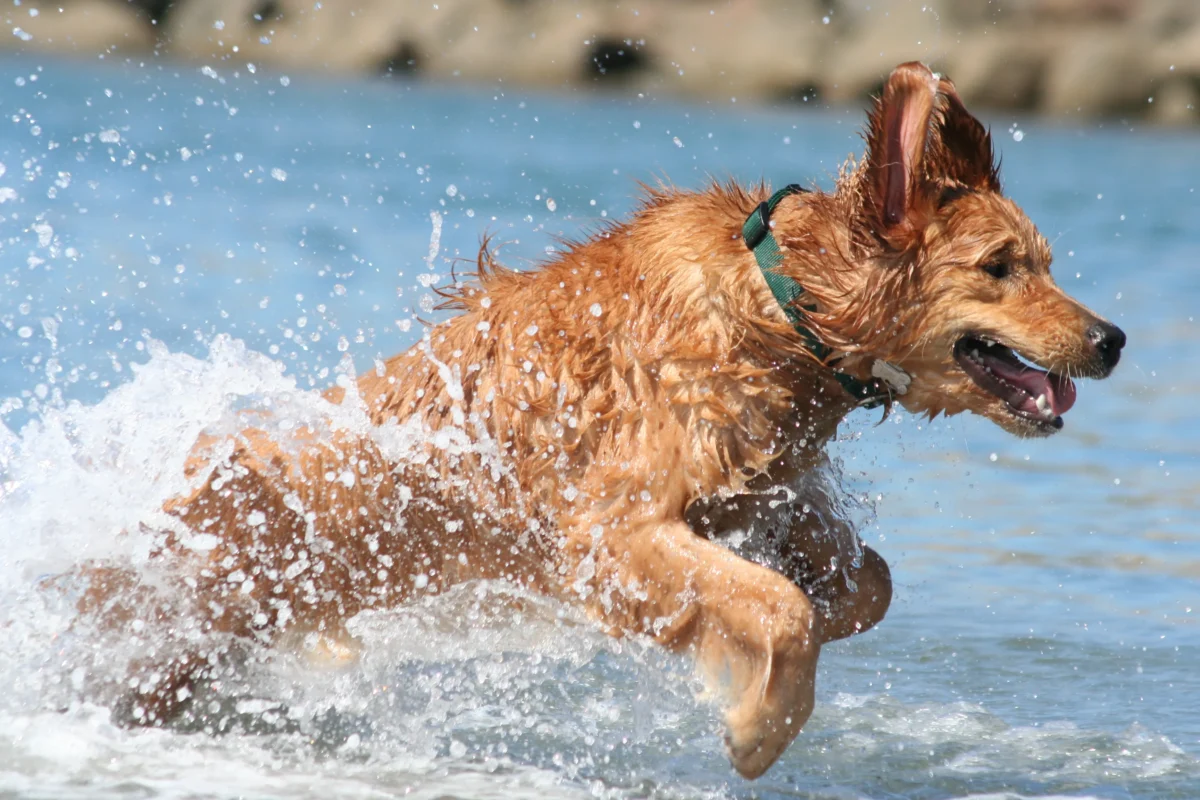Are you a proud owner of a golden retriever? If so, you know how important it is to ensure your furry friend is happy and content. But how can you tell if your golden retriever is truly happy? In this article, we will explore some key signs to look out for that indicate your golden retriever is in a state of happiness. By understanding these signs, you’ll be able to provide the best care and create a loving environment for your beloved pet. So, let’s dive in and discover how to know if your golden retriever is happy!
As a responsible pet owner, it’s crucial to be able to interpret your golden retriever’s body language and behavior. A wagging tail is often seen as a universal sign of happiness in dogs, and golden retrievers are no exception. But it’s not just the wag of the tail that matters – the position and speed of the wag can also provide valuable insights into your furry friend’s emotions. By learning to read your golden retriever’s tail language, you’ll have a better understanding of their happiness levels.
Another key indicator of a happy golden retriever is their overall energy levels. A content and joyful dog will have a healthy appetite, engage in regular exercise, and have a zest for life. Keep an eye out for signs of playfulness, such as bounding around the yard or enthusiastically chasing a ball. A happy golden retriever will often display a natural curiosity and eagerness to explore their surroundings. By observing their energy levels, you’ll be able to gauge their happiness and well-being.
Lastly, a golden retriever’s eyes can speak volumes about their emotional state. Bright, alert eyes that are free from any signs of stress or sadness are a good indication of a happy dog. When your golden retriever looks at you with a soft, relaxed gaze, it’s a sign of trust and contentment. Pay attention to their eyes and the expressions they convey, as they can provide valuable insights into your furry friend’s
Signs that Your Golden Retriever is Happy
As a dog lover who has owned both a golden retriever and a Goldendoodle, I understand the importance of knowing whether your furry friend is happy or not. Thankfully, there are a few key signs that can help you determine just that. So, if you’re curious to know how to tell if your golden retriever is happy, keep an eye out for the following signals:
1. Wagging Tail: The wagging of your golden retriever’s tail is one of the most obvious indicators of happiness. If their tail is wagging from side to side in a relaxed and fluid motion, it typically means they are feeling content and joyful.
2. High Energy Levels: A happy golden retriever will usually have high levels of energy. They’ll be eager to play, go for walks, and engage in activities that they enjoy. If your golden retriever is bouncing around with excitement, it’s a clear sign that they’re in a good mood.
3. Playfulness: Another way to gauge your golden retriever’s happiness is through their playfulness. Happy dogs will often exhibit playful behavior, such as chasing after toys, tossing them around, and even playfully pawing at you. This playful nature is a testament to their happiness and satisfaction.
4. Bright, Alert Eyes: The eyes are the window to a dog’s soul, and in the case of a happy golden retriever, their eyes will be bright and alert. You’ll notice a sparkle in their eyes, which is a sign of their overall well-being.
5. Relaxed Body Language: A happy golden retriever will have a relaxed body posture. Their body will be loose and free of tension, and they may even lay down on their back, exposing their belly, which is a sign of trust and contentment.
Remember, every dog has their own unique personality, so it’s essential to take these signs into consideration alongside your knowledge of your furry friend’s individual behavior patterns. By being attentive to these signs, you’ll be better equipped to understand and meet the needs of your beloved golden retriever or Goldendoodle.
Body Language Signs of a Happy Golden Retriever
When it comes to understanding your beloved golden retriever, paying attention to their body language is key. These furry companions have a unique way of communicating their emotions non-verbally. As a dog lover and owner of a golden retriever and Goldendoodle, with my experience working at animal shelters and veterinary offices, let me share with you some body language signs that indicate a happy golden retriever.
1. Tail Wagging: Ah, the legendary tail wag! It’s not just about the wagging itself, but the position and speed. A happy retriever will have a loose and wide wag that encompasses their entire back end, often accompanied by a bouncy body language. Remember, a tucked or stiff tail may indicate anxiety or fear, so pay attention to the overall expression.
2. Bright, Alert Eyes: Happy golden retrievers have eyes that are bright, alert, and focused. You’ll notice a sparkle in their eyes that conveys their joy and engagement with the world around them. Dull or droopy eyes, on the other hand, could be a sign of fatigue or illness.

« Unleash the Energy! Discover the Mind-blowing Secrets Behind Golden Retrievers’ Insane Levels of Energy
10 Essential Tips for Adopting an Older Golden Retriever – Create a Loving Home for Your Furry Companion »
3. Relaxed Body Posture: A content and joyful golden retriever will have a relaxed body posture. Their muscles will be loose, and they might even flop down on their back, inviting belly rubs. This is a clear sign that your furry friend feels safe, comfortable, and happy in your presence.
4. Playfulness: A happy golden retriever is full of energy and playfulness. They will exhibit a bouncing gait, playful jumps, and a desire to engage in games with you. If they bring you toys or wag their tails excitedly during playtime, you can be sure they’re having a great time.
5. Trustful Behavior: Trust is a vital component of canine happiness. A happy golden retriever will display trustful behavior, such as leaning against you, snuggling, or gently resting their head on your lap. These actions indicate that they feel loved, secure, and content in your company.
Understanding the body language of your golden retriever or Goldendoodle is essential for building a strong bond and ensuring their well-being. By paying attention to these signs, you can better interpret your furry friend’s emotions and address any needs they may have.
Now that you know these body language cues, you’ll be able to better gauge the happiness of your golden retriever or
Physical Indications of a Happy Golden Retriever
As a fellow dog lover and proud owner of a golden retriever and a Goldendoodle, I can understand how important it is to know if your furry friend is happy. Luckily, there are several physical indications that can help you assess your golden retriever’s happiness without needing to rely solely on verbal communication. Here are some telltale signs to look out for:
1. Tail Wagging: The wagging tail of a golden retriever is like a happiness thermometer. A happy retriever will wag their tail in a relaxed manner, with a loose and fluid motion. Look for the whole-body wag, where their entire rear end wiggles along with their tail. Keep in mind that a stiff, rapid wag can indicate excitement or even anxiety, so pay attention to the overall body language.
2. Bright Eyes: The eyes truly are the windows to the soul, and this holds true for our canine friends as well. When a golden retriever is happy, you’ll notice that their eyes are bright, alert, and full of life. They will maintain eye contact with you and their gaze will be soft and friendly. Dull or squinting eyes can be a sign of discomfort or unhappiness.
3. High Energy Levels: A happy golden retriever is brimming with energy. They will display enthusiasm and eagerness during playtime or walks, with a bouncy gait and a lively demeanor. Notice how they bound around, chasing their favorite toys or engaging in interactive play. Remember, if your golden retriever has an appropriate energy outlet, it can help keep them content.
4. Relaxed Posture: Pay attention to your golden retriever’s body posture. A dog who is relaxed and content will have a loose and wiggly body. Their muscles will be relaxed, with no signs of tension or stiffness. You may also notice their ears are relaxed and their mouth may be slightly open, with a happy pant. On the other hand, a stiff body posture or a tucked tail may indicate anxiety or fear.

5. Trustful Behavior: Happy golden retrievers possess a deep sense of trust and affection for their owners. They will seek physical contact by leaning against you, nudging your hand for pets, or snuggling up to you. This trustful behavior illustrates their comfort and happiness in your presence.
Remember, every golden retriever is unique, so it’s crucial to
Behavioral Signs of a Happy Golden Retriever
As a dog lover who has owned both golden retrievers and Goldendoodles, and has worked at animal shelters and veterinary offices, I understand the importance of knowing whether your furry friend is truly happy. While each dog has its unique personality, there are certain behavioral signs that can indicate a happy golden retriever. Here are a few things to look out for:
1. Tail Wagging and Body Language: One of the most significant indicators of a happy golden retriever is their wagging tail. A wag that starts at the base and moves from side to side enthusiastically shows excitement and contentment. Additionally, a relaxed body posture, with their tail neither tucked nor stiff, is a positive sign.
2. Playfulness and High Energy Levels: A happy golden retriever will often display increased playfulness and energy. They might engage in zoomies, romp around the yard, or bring you their favorite toys for a game of fetch. Their enthusiasm is contagious and demonstrates their joyous state of mind.

3. Bright, Alert Eyes: Take a look into your golden retriever’s eyes. A happy dog will have bright and alert eyes. They will be focused, reflecting their happiness and engagement with their surroundings.
4. Relaxed and Trustful Behavior: A content golden retriever will exhibit trustful behavior. They might lean against your leg or snuggle up to you on the couch, seeking comfort and companionship. This behavior showcases their deep bond with you and their overall sense of security and happiness.
Remember, these behavioral signs should be considered alongside your knowledge of your individual dog’s behavior patterns. Every golden retriever is unique, just like my own two furry companions. My golden retriever, Max, loves exploring nature trails and swimming in lakes, while my Goldendoodle, Daisy, enjoys playing fetch and meeting new people. Understanding your dog’s personality is essential in gauging their happiness levels accurately.
So, keep an eye out for those wagging tails, playful energy, alert eyes, and moments of trustful behavior. Your happy golden retriever will bring you joy and be an invaluable member of your family.
Creating a Happy Environment for Your Golden Retriever
As a dog lover who owns both a golden retriever and a Goldendoodle, I understand the importance of creating a happy environment for your furry friend. With my experience working at animal shelters and veterinary offices, I’ve learned a thing or two about what it takes to keep your golden retriever (or Goldendoodle) happy and content. Here are some tips to help you create a joyful space for your beloved pet:

1. Provide plenty of exercise: Golden retrievers are known for their boundless energy, so it’s crucial to give them ample opportunities to burn it off. Regular walks, playtime at the park, or even a game of fetch in the backyard will help keep them happy and healthy. Plus, the exercise will strengthen your bond with your furry friend.
2. Offer mental stimulation: Mental stimulation is just as important as physical exercise for a happy golden retriever. Engage their active minds by providing puzzle toys, hiding treats for them to find, or teaching them new tricks. This will keep their minds sharp and prevent boredom.
3. Create a safe and comfortable space: Dogs, including golden retrievers, thrive in a secure and cozy environment. Make sure they have a comfortable bed or crate where they can relax and feel safe. Provide soft blankets, toys, and a designated area where they can retreat when they need some alone time.
4. Maintain a healthy diet: A nutritious diet is essential for your golden retriever’s overall well-being. Consult with your veterinarian to determine the best diet plan for your furry friend. Remember to provide fresh water at all times to keep them hydrated.
5. Give them plenty of love and attention: Golden retrievers are social animals that thrive on human companionship. Spend quality time with your furry friend, shower them with love and affection, and include them in family activities. A happy golden retriever is one that feels loved and cherished.

Remember, each golden retriever is unique, so it’s essential to observe their behavior and tailor their environment to their specific needs. By following these tips, you can create a joyful atmosphere for your golden retriever, ensuring their happiness and well-being for years to come.
Conclusion
Knowing if your golden retriever is happy is essential for their overall well-being. By understanding their body language and behavior, you can gain valuable insights into their emotional state. Pay attention to their tail wagging, energy levels, playfulness, and the brightness of their eyes. A relaxed body posture and trustful behavior are also indicators of a happy dog.
Remember, each golden retriever is unique, so it’s important to consider their individual traits when assessing their happiness. While this article provides general guidelines, you are the best judge of your dog’s happiness based on your knowledge of their behavior patterns.
Creating a happy environment for your golden retriever involves providing plenty of exercise, mental stimulation, a safe and comfortable space, a healthy diet, and lots of love and attention. By incorporating these elements into their daily routine, you can ensure that your golden retriever leads a joyful and fulfilling life.
Stay attuned to your golden retriever’s needs and continue to strengthen the bond between you. With your care and understanding, you can keep your beloved furry friend happy and content for years to come.










